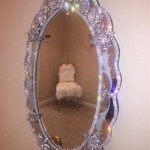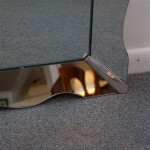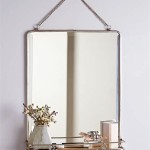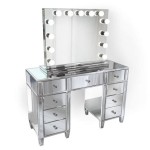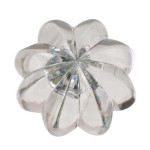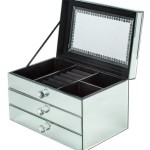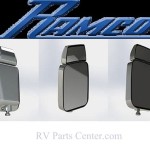Is Mirror Glass Expensive?
The cost of mirror glass is influenced by a multitude of factors, making a simple yes-or-no answer impossible. Understanding these factors allows for a more informed assessment of whether a particular mirror's price is reasonable for its type and quality.
One primary factor affecting cost is the type of glass used. Standard mirror glass is typically made from annealed glass, also known as float glass, which is the most common and generally least expensive option. However, other glass types like tempered glass, laminated glass, and low-iron glass are also utilized in mirror production, each carrying a different price point. Tempered glass, known for its strength and safety features, is more expensive than annealed glass due to the additional processing it undergoes. Laminated glass, consisting of two or more layers of glass bonded together with a plastic interlayer, offers enhanced safety and sound insulation, further increasing its cost. Low-iron glass, formulated with a reduced iron oxide content, minimizes the greenish tint inherent in standard glass, resulting in a clearer, more colorless reflection, and consequently a higher price tag.
The size and thickness of the mirror also play significant roles in determining the final cost. Larger mirrors require more raw materials and are often more complex to manufacture and transport, contributing to higher prices. Similarly, thicker glass adds to the material cost and weight, impacting both production and shipping expenses.
Beyond the basic glass itself, the reflective coating applied to the glass contributes to the overall expense. Most commonly, silvering is used to create the reflective surface. While traditional silvering is relatively cost-effective, other options like aluminum or specialized coatings designed for specific applications, such as enhanced reflectivity or corrosion resistance, can significantly increase the cost.
The quality of the manufacturing process and the precision applied are also crucial cost determinants. High-quality mirrors utilize precise cutting and polishing techniques to ensure a flawless, distortion-free reflection. These processes require specialized equipment and skilled labor, both of which contribute to a higher price compared to mirrors produced with less stringent quality control.
The addition of features like beveling, etching, or decorative framing significantly influences the cost. Beveling, which involves creating an angled edge around the perimeter of the mirror, requires specialized machinery and adds an element of craftsmanship, increasing the overall price. Etching, where designs are carved into the glass surface, also requires specialized skills and equipment, adding further cost depending on the complexity of the design. Ornate or custom frames can significantly increase the final price, depending on the materials and craftsmanship involved.
The vendor from whom the mirror is purchased plays a role in the final cost. High-end retailers or specialized mirror manufacturers often command higher prices for their products, reflecting factors such as brand recognition, curated selections, and potential higher quality control standards. Discount retailers or online marketplaces may offer lower prices, but it’s essential to consider potential variations in quality and customer service.
Installation costs must also be factored into the overall expense. While some mirrors are designed for DIY installation, larger or more complex mirrors may require professional installation. The cost of professional installation varies depending on the size and complexity of the mirror, the location, and the installer's rates.
The intended application of the mirror further influences its cost. Standard mirrors for residential use are generally less expensive than specialized mirrors designed for specific applications. For instance, mirrors used in scientific instruments, telescopes, or solar panels require specific coatings and manufacturing processes, driving up their cost considerably.
Geographic location also plays a role in price variations. Transportation costs, local labor rates, and regional market conditions can all contribute to differences in mirror pricing across different areas. Areas with higher living costs generally have higher prices for goods and services, including mirrors.
Finally, market demand and economic conditions can influence the price of raw materials, manufacturing costs, and ultimately, the retail price of mirrors. Fluctuations in currency exchange rates and global supply chain disruptions can also impact pricing.
In conclusion, evaluating the cost of a mirror requires a nuanced understanding of various contributing factors. By considering these factors, one can make a more informed decision about whether a particular mirror's price aligns with its type, quality, and features.

The Cost Of Mirror Glass Learn Blowing

Glass Two Way Mirror In Stock Custom Sizes Worldwide

Mirror Glass Auto Excellence
What Are The Advantages And Disadvantages Of Using Glass Instead Metal For Mirrors Quora

How Much Does A Custom Cut Mirror Cost

One Of The Most Expensive Mirrors In World

Why Are Mirrors So Expensive Top 5 Reasons

Mirror On The Wall Piacea Design

Factory Tempered Glass Cost Per Square Foot For Building

Mercury Mirror

